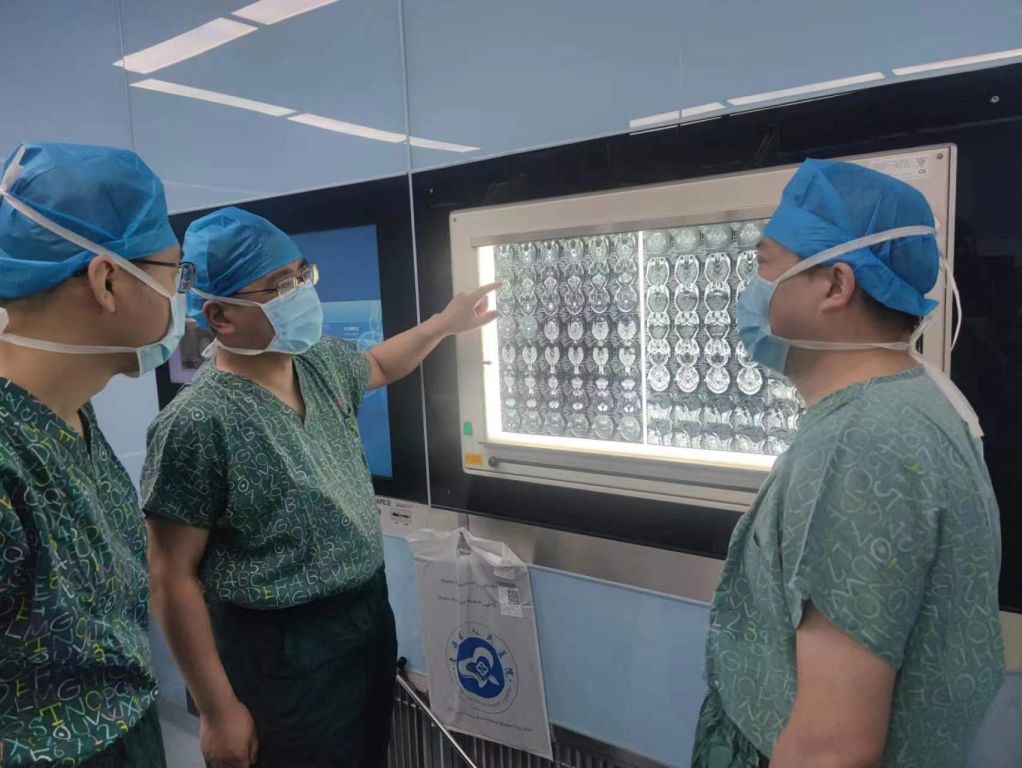Recently, Professor Meng Qiang from the First Affiliated Hospital (FAH) of Xi’an Jiaotong University (XJTU) residing in Neurosurgery Department of Qinghai Provincial People’s Hospital cooperated with Director Xian Chunming from Qinghai Provincial People's Hospital successfully completed one case of microvascular decompression (MVD) of trigeminal nerve, which filled the gap in the field of surgical treatment of trigeminal neuralgia in Qinghai province.

A male 59-year-old patient, surnamed Qin, frequently suffered from pain in the left forehead and surrounding the orbit for more than 6 years. He experienced knife-like pain during the frequent attack, which could be induced or aggravated by swallowing, brushing teeth, opening mouth and sticking out his tongue. Drug use and block treatment yielded poor efficacy, which severely affected the patient's life and caused anxiety and insomnia,etc. Comprehensive analysis showed that the patient suffered from pain for several years. Cranial MRI revealed that microvessels covered the root of the left trigeminal nerve, and surgical indications were clear. Therefore, it was determined to perform MVD of the trigeminal nerve for the patient. Considering complicated blood vessels in the surgical area, catheter was placed in the lumbar cistern preoperatively to release cerebrospinal fluid beforehand and reduce the traction on brain tissues and blood vessels. A 6-cm-long surgical incision was created behind the ear. MVD procedures were mature and the risk was relatively low. The surgery was jointly completed by Professor Meng Qiang from the FAH and Director Xian Chunming from Qinghai Provincial People's Hospital for approximately 2 h. Relevant symptoms were relieved immediately after the surgery. Postoperatively, he reported no pain in the left forehead or orbit. In addition, cosmetic suture of surgical incision avoided the pain of postoperative suture removal. The wound was healed well. The length of postoperative hospital stay and hospitalization expense were also reduced.


Compared with non-surgical treatment, MVD is the only procedure targeting the etiology, which can cure the disease at one time. Most patients obtain high clinical efficacy and low recurrence rate, and the normal function of trigeminal nerve can be preserved without destroying nerve. Global statistics show that 86.9% of patients with primary trigeminal neuralgia can be significantly mitigated after surgery, and a low proportion of patients still suffer from symptoms or mild symptoms after MVD due to the compression of multiple blood vessels, failingto achieve complete remission. After comprehensive evaluation, repeated surgery can be considered for these patients.